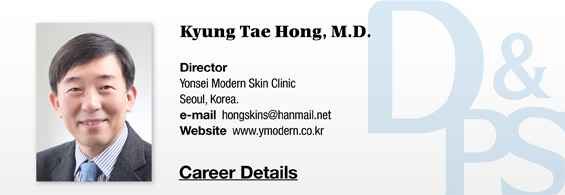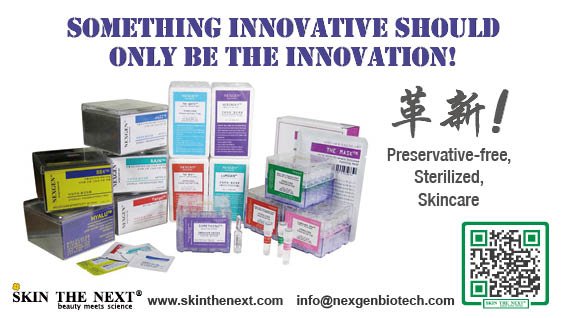▶ Previous Artlcle : #6-1. New Paradigm in The Treatment of Cosmetic Pigmentary Disorder ‘Window Technique’
Photon Delivery Enhancement
Number of Session in The Treatment Per Disease is Reduced.
What’s most important in Window Technique is photon delivery enhancement. When using Long Pulsed Alexandrite laser, I thought about the way to deliver photon effectively deep into the center of lesion.
[Advertisement] SKIN THE NEXT – Manufacturer: NEXGEN(www.nexgenbiotech.com)
If photon is not delivered sufficiently, the lesion may recur or hyperpigmentation may develop. Furthermore, excessive delivery of photon may stimulate not only the lesion but also the surrounding tissues, causing hyperpigmentation.
In a more easier term, lights cannot enter a room when the window is closed, and bright lights will be poured into the room when the window is open. The passage through which light comes in is Window Channel.
Before further going through Window Technique, let’s talk about the problems of Q-switched Nd:YAG laser and Long Pulsed Alexandrite laser, which are both conventional treatments. It is true that these two methods have been commonly used so far and the effects are excellent. But they are not without side effects.
First of all, Q-switched Nd:YAG laser have a better effect, but the photomechanical effect causes melanocyte activation on the areas adjacent to lesion, increasing the rate of hyperpigmentation. In addition, Long Pulsed Alexandrite laser does not have photomechanical effect and provides gentle heating, but the target area show no change immediately after laser irradiation, making it difficult to determine the end point. There is no appropriate beam size for lesion and, although the size has become smaller with GentleMax pro, 6mm is still bigger than lesion. This may result in inflicting damage to the surrounding tissues and, ultimately, cause side effects.
Window Technique can be simply defined as a combination of Er:YAg laser and Long Pulsed Alexandrite laser. The most significant aspect of Window Technique is using accurate ablative Er:YAG laser to minimize heat damage and to measure the intended depth to micrometers. The access depth differs depending on the area of pigmented lesion, and the therapeutic effect can be enhanced and the change of scarring can be reduced by accessing the optimal depth. In addition, Long Pulsed Alexandrite laser can access target chromophore more safely, without melanin-specific photomechanical damage.

Acquired bilateral nevus-of-Ota like macule (ABNOM) on the face. Four months after a single Window Technique, approximately 90% of the lesions are disappeared.

Lentigines on the face. Three months after a single Window Technique, the lesions are completely disappeared without hyperpigmentation.
Markedly Reduced Hyperpigmentation Rate after Treatment
By using Er:YAG laser and Long Pulsed Alexandrite laser together, the distance between light source and target chromophore can be minimized, and open Window Channel works as a direct contact route.
This allows GentleMax of minimum energy to exert a sufficient effect, and stacking pulse bears no risk. Thick lentigines all over the face can be treated within a very short period of time, without pain and hyperpigmentation, in this manner.
The peeling depth of Er:YAG laser varies in Window Technique. For example, peeling depth is determined based on the depth of target melanin, even below the basal layer when target is deeply placed. The peeling depth can be very thin, limited to the upper layer of the epidermis, for freckles, which are placed shallow in the epidermis. That is, varying Window Channels per disease is a merit of Window Technique. Of course, accurate diagnosis is essential for this.
After making Window Channel and irradiating G-max, conduction loss disappears and photon can be delivered to the intended depth. At this point, GentleMax of minimal range is sufficient for procedure. The extent of peeling is not as much as to leave a scar. Hyperpigmentation is almost non-existent, and if there is hyperpigmentation, it is so weak that anyone can solve it.
In conclusion, Window Technique, which makes conduction open channel with Er:YAG laser, allows procedure with minimum fluence. Window Technique minimizes the risk of hyperpigmentation, by gaining access to the depth of lesion and ensuring sufficient absorption coefficient with proper dye laser, and markedly reduces the number of treatment by generating sufficient route for deep lesion. The risk of hyperpigmentation would be further reduced if the energy could be decreased to a proper level.

Lentigines on the face. Six months after a single Window Technique, hyperpigmentation is completely disappeared.

Lentigines on the face. One month after a single Window Technique, hyperpigmentation is completely disappeared.
Thank you for listening.
-The end-





















